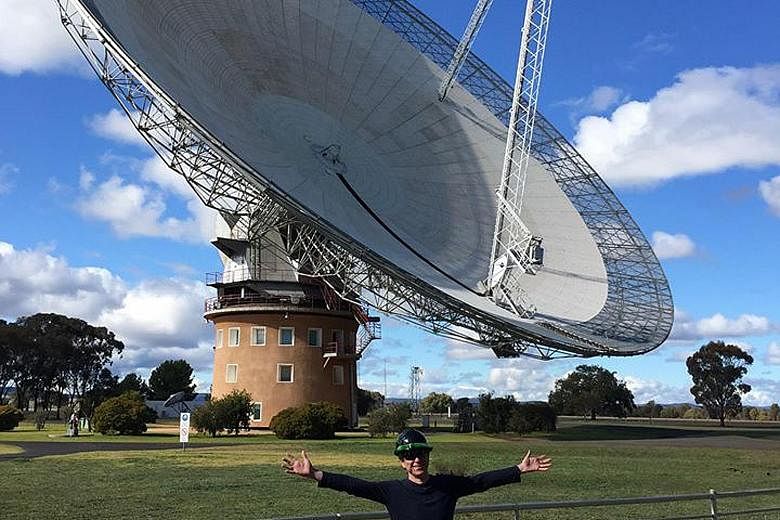As he prepares to embark on a pioneering 10-year global quest to find alien life, Australian astrophysicist Matthew Bailes says he believes extraterrestrials probably exist, but he admits the chances of "making contact" are slim.
With reasoned scientific restraint, the Melbourne-based researcher notes two major obstacles to finding aliens. First, they might emit signals that humans cannot detect and, second, alien life forms might have existed once but could have wiped themselves out.
"I think there is quite a low probability of finding something," he told The Straits Times. "But I think if we did, it would be the most profound discovery of all time."
Despite his cautionary note, Professor Bailes said he had no reservations about joining the new US$100 million (S$137 million) Breakthrough Listen project being funded by Russian billionaire Yuri Milner and backed by British astrophysicist Stephen Hawking.
As the effective Australian lead on the project, Prof Bailes, who is from the Swinburne University of Technology's Centre for Astrophysics and Supercomputing, will oversee efforts at Parkes Observatory, which houses one of the two radio telescopes that will be used.
"I do think that this will be one of the great pioneering studies in the search for extraterrestrial life," he said. "The last time we did this as a community with any decent resources was back in the mid-1990s. Computational power has increased by a factor of about 10,000 since then."
If contact does happen, he warned, earthlings should be careful about responding. Alien civilisations, he said, could be stronger than humans, and might not be friendly.
Asked whether he feared making contact with hostile aliens, he said: "Given that we are only listening, it does not bother me at all. If they are hostile, I would rather know about them before they know about us."
Initially, the new project will involve two of the world's most powerful radio telescopes, including the 64m single-dish telescope at Parkes, about 380km west of Sydney. The dish was famously used to receive transmissions during the Apollo 11 moon landing in 1969.
Another team will be based at the Robert C. Byrd Green Bank Telescope in West Virginia in the United States. An optical telescope at the Lick Observatory in California will also be deployed.
As to what a signal detected from an alien might look like, Prof Bailes said: "It depends on whether they want to say 'we are here', or whether they want to transmit information between stars.
"The signal could be encrypted or disguised in a way we might not even recognise. It might be that they stopped using radio waves billions of years ago, and now use some exciting and unforeseen technology we don't even know about."
A 52-year-old father of four, Prof Bailes said his own research has focused on finding radio pulsars - a task comparable to searching for signals from aliens, even though he is not a "sci-fi geek". He was interested in studying mathematics at first, he said, but was drawn to astronomy as an undergraduate in the 1980s by the TV series Cosmos, which was presented by astrophysicist Carl Sagan.

